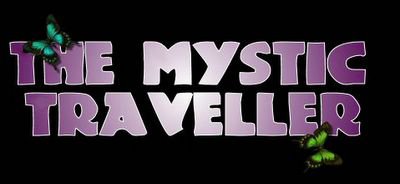Mission: Betel Nut
Throughout Asia, you will see the splatter of red spittle on the roads and pathways. It looks similar to the discharge of a heavy nosebleed. The source of this comes from the Betel nut, a mild stimulant that has been masticated for millennia.
From India to Fiji, Betel nut is habitually chewed, and you will find many people with dark red-stained teeth. It often comes in Paans, which are a combination of the nut and lime, wrapped in a Betel leaf. Chewing tobacco and sweet candy can also be added, depending on personal taste. This little sack is then placed at the side of the mouth, where the lime and saliva gradually draw out the Betel nut's inherent power.
As someone with curiosity about cultures and their habits, I had always wanted to try Betel nut. This was to be the first mission of call when we arrived in India. After walking around Delhi, exploring its streets, Jason and I selected one of the many, many Betel nut stalls that can be found on every street corner. Our Betel nut seller seemed to be bemused to have two foreigners purchasing from him.
After washing the leaves in filthy-looking water, he then painted the white lime paste on to them. Next, some broken chunks of the nut were added, with some tobacco (yuck!) and some sweetening. We paid our man his dues, and then placed the wraps into our mouths.
Immediately, we were struck by the spicy bitterness of the nut. It took very little time for my mouth to resemble that of a pummelled boxer, with both of us adding stains to the pathway, in the hope of alleviating the concentration of the taste in our mouths. Very gradually, a slight buzz became apparent and a mild euphoria followed.
It was quite enjoyable, so Jason and I decided to purchase another. This time the mix was slightly different, but the effect was the same. Jason's mouth now looked very red, and local people laughed at us, as it must have been a strange sight, seeing foreigners partaking in this very local indulgence.
Both Jason and I were thoroughly enjoying the novelty of the experience, and were tempted to try a third wrap. This turned out to be a mistake. Whilst some local people chew on them endlessly all day, neither of us had the built-up tolerance to consume anymore.
We finally reached Gandhi's eternal flame, in Delhi's memorial park. The effects of the nut were still evident, but instead of euphoria, a horrible nausea came over us. Our faces became pale, and our legs unsteady. We sat down in the gorgeous park feeling very sick, and swearing never to chew the Betel nut ever again.
By the time we had walked back to the hotel in New Delhi, the effects had passed, and we were once again back to our full vitality.



2 comments:
I received this Betel nut advice from Mr. Sridhar Pandurangiah. For some reason his post failed to be published here, so I guess the server is still causing problems. Anyway, here it is:
You should ask for "Saada Paan" (Plain Paan). Otherwise you are likely to get it with tobacco and "Khimam" - a highly concentrated tobacco extract! This is the cause of the heady feeling, nausea...The "Kaththa" - the brown paste thats added after the lime isnt very good for the health. I avoid it. You can ask for "Saada Paan" without "Kaththa" or go for the "Sweet Paan" without the "Kaththa". You can chew betel nut without the leaves if you prefer. There are several spiced up varieties available in most supermarkets. Since you are in Delhi try the NANZ super market.
On the whole nice writing, you might be interested in updating your travels on www.WikiTravel.org. Will read the other posts over the weekend.
Thank you for the good advice. Actually, the event mentioned in my post, happened on my trip to your great country in 2000. I will be returning to India this December, visiting the south this time. I cannot express how much I love your country.
Post a Comment